Luis Cruz Azaceta, an artist who fled Cuba at age 18, shortly after Fidel Castro came to power, is a fitting inaugural exhibition for Miami’s new American Museum of the Cuban Diaspora.
by Benjamin Sutton, via hyperallergic.com
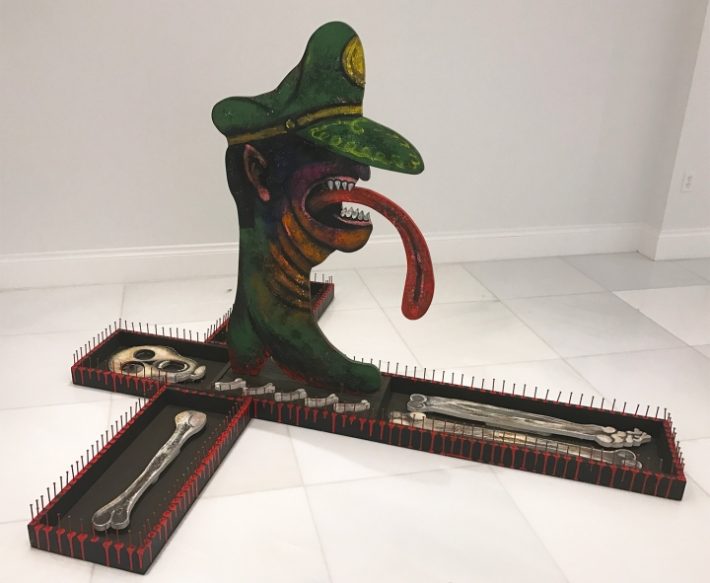
Luis Cruz Azaceta, “El Dictador” (1988), wood cutout, nails, acrylic, 84 1/4 x 74 x 53 1/2 in
MIAMI — In 1960, when he was just 18, the artist Luis Cruz Azaceta fled Cuba for New York City, partly to avoid conscription into Fidel Castro’s army. Just six days before the death of the Cuban revolutionary and former dictator, a new museum devoted to Cuban art opened here with an exhibition devoted to Azaceta’s often searing, sometimes heavy-handed work.

Luis Cruz Azaceta, “5 Towers” (2002), wood and mixed media, 128 x 67 x 17 in
Luis Cruz Azaceta: Dictators, Terrorism, War, and Exiles at the American Museum of the Cuban Diaspora (“the Cuban” for short) features 32 paintings, drawings, prints, and assemblage sculptures spanning 1980 to 2011. (The show first opened at Aljira in Newark in 2014.) Some of the works directly address the Castro regime and the plight of Cubans fleeing the country, while others take up the pervasive threats of violence and terrorism in his adopted homeland, particularly in the aftermath of the Oklahoma City bombing and 9/11 — which Azaceta, who settled in Queens, witnessed firsthand. The pieces range in tenor from sorrow and nostalgia to outrage and biting satire.
Azaceta’s aesthetic also evolves across the exhibition’s four galleries, which span both levels of the Cuban (whose interior feels a little like someone squeezed a small museum into a McMansion, complete with shiny tile floors and a giant, curving staircase). The parallels to anti-war work by George Grosz and Otto Dix are hard to miss in works like the painting of a tortured figure “Latin American Victims of Dictators, Oppression, and Death” (1987), or the spectacular wood cutout sculpture “El Dictador” (1988), which features a grotesque caricature bust of Castro, with a monstrous tongue stretching out of its mouth, erupting from the chest of a screaming skeleton rendered in the style of Cuba’s Day of the Dead iconography. Others, like the drawing triptych “Cuban Exodus” (1980), marshall the kind of fear and ambiguous dread one gets from Leon Golub paintings.

Luis Cruz Azaceta, “Latin American Victims of Dictators, Oppression, and Death” (1987), acrylic on canvas, 76 x 168 in
The most striking groups of work in the show, however, are his two bodies of large-scale paintings, one grimly monochromatic and speckled with affixed Polaroids, the other dazzlingly colorful but embedded with small scenes of violence. The latter includes the gruesome painting “Slaughter” (2010), whose horizontal planes of pink and brown are in fact severed limbs and fingers, stacked one atop the other to create a kind of landscape that a convoy of military vehicles (itself carrying more bloody limbs) drives across. Two other paintings in this style — “Terrorist II” (2010) and “Piñata” (2009) — are slightly subtler only because the relationship between their swirling areas of saturated color (which are bolder and verge on Fernand Léger-style abstraction) and the tiny patches of gloomy figuration is ambiguous. One gets the sense that Azaceta may be trying to visualize how even the most vibrant cultures can become rotten at the core.
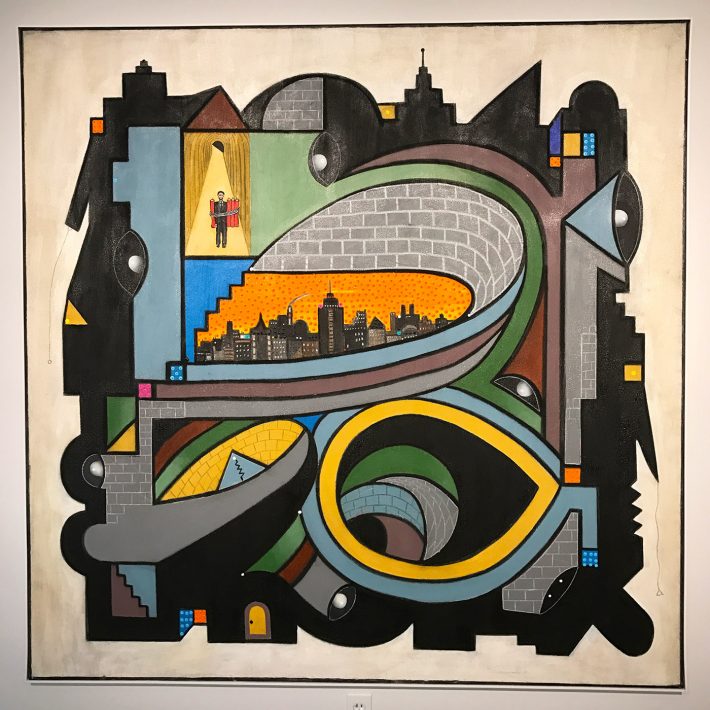
Luis Cruz Azaceta, “Terrorist II” (2010), acrylic on canvas, 72 x 70 in
The exhibition’s other series of large-scale paintings are all gloom, with families and figures floating in large swaths of untreated canvas amid seas of dots and bits of improvised rafts. Polaroid photos pinned to the canvases sometimes correspond to the image — a snapshot of a boat sits below the migrating family in “Family/Rafters” (1994) — and elsewhere play off it ominously — like the image of a shark’s bloody teeth alongside the eye-less figure adrift in “ARK” (1994). These two vast, unstretched canvases take up the themes of exodus, migration, and the sensation of being unmoored felt by those who, like Azaceta, fled the country that most profoundly shaped their identities. Such ideas were at play in his works of the 1980s and early ’90s, but achieve new emotional force in these large works (evoking, again, Golub).
Where the show falters is in works like the stylized cityscape paintings “Shifting States: Baghdad” (2011) and “Homeland Security” (2011), whose fusion of cartoon-influenced imagery and abstract forms never quite comes off, and the sculptural installation “Dialogue 9/11” (2001). The latter work features two plush dogs blindfolded and duct taped to a lawn chair, with a bomb in their laps, and placed in front of a column of photographs of the titular day’s terrorist attack in Lower Manhattan. Much of Azaceta’s work has an impactful emotional directness, but this piece in particular knowingly traffics in clichés without pushing them any further or adding texture to them.
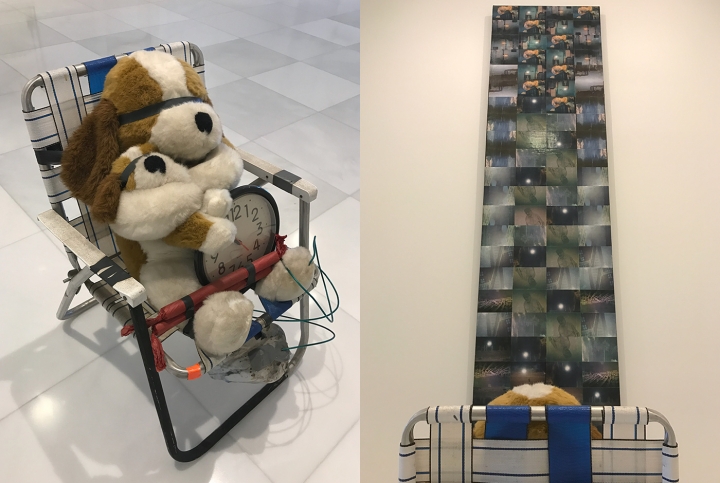
Detail views of Luis Cruz Azaceta, “Dialogue 9/11” (2001), photographs on wood, mixed media, stuffed animals, folding chair, 96 x 24 in
Contrast “Dialogue 9/11” with “Exiled 50” (2009), a self-portrait of sorts that features Azaceta as a stylized, nude figure pulling behind him the enormous shape of the island of Cuba. The visual metaphor that every immigrant is forever carrying with them part of their homeland is not particularly novel, but it nevertheless resonates here, partly thanks to the artist’s strange rendering of the Cuban landscape with cotton balls. It’s as if he is acknowledging the fuzziness of the Cuba he remembers and hauls with him. Now that the man who spurred Azaceta’s departure from the island has died and the diplomatic stalemate he created with the US is relaxing, perhaps the artist’s image of his homeland will become clearer — or fuzzier still.
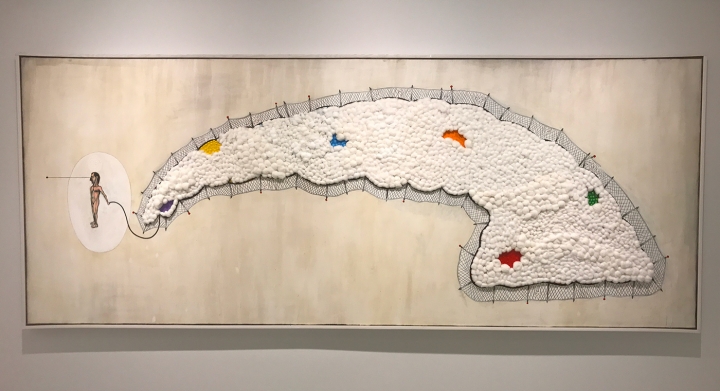
Luis Cruz Azaceta, “Exiled 50” (2009), acrylic, cotton, pencil, shellac on canvas, 60 x 144 in

Installation view of Luis Cruz Azaceta: Dictators, Terrorism, War and Exiles at the American Museum of the Cuban Diaspora
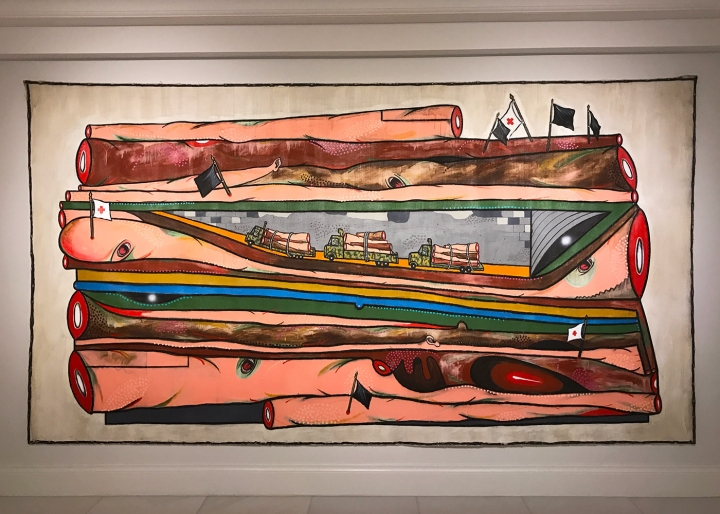
Luis Cruz Azaceta, “Slaughter” (2010), acrylic on canvas, 84 x 156 in
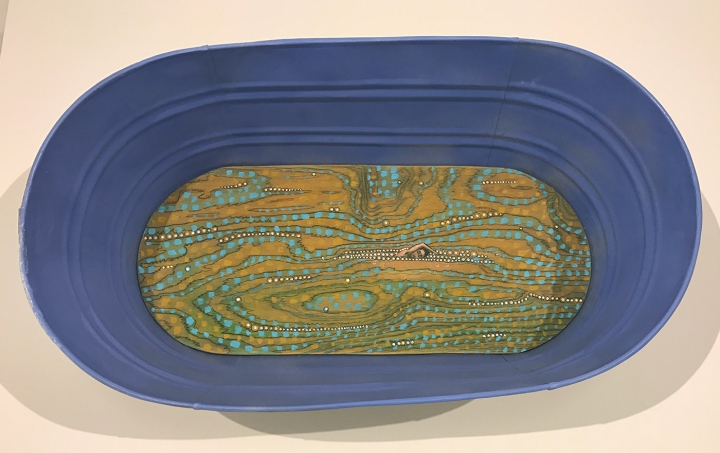
Luis Cruz Azaceta, “Swimming to Havana” (2010), metal tub, enamel, wood, acrylic, 10 1/2 x 31 1/2 x 18 in
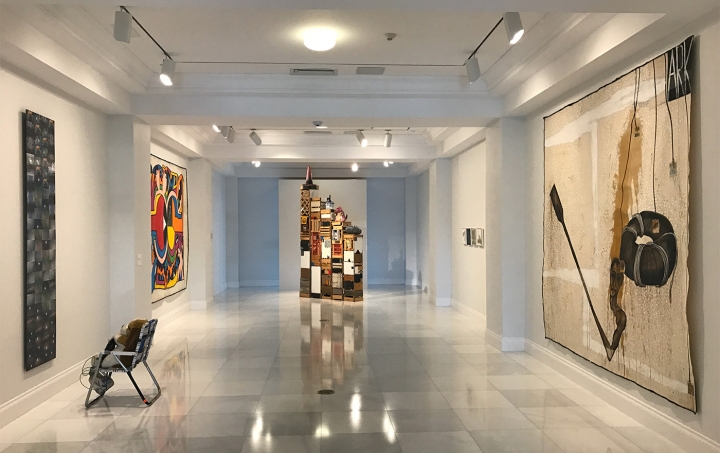
Installation view of Luis Cruz Azaceta: Dictators, Terrorism, War and Exiles at the American Museum of the Cuban Diaspora
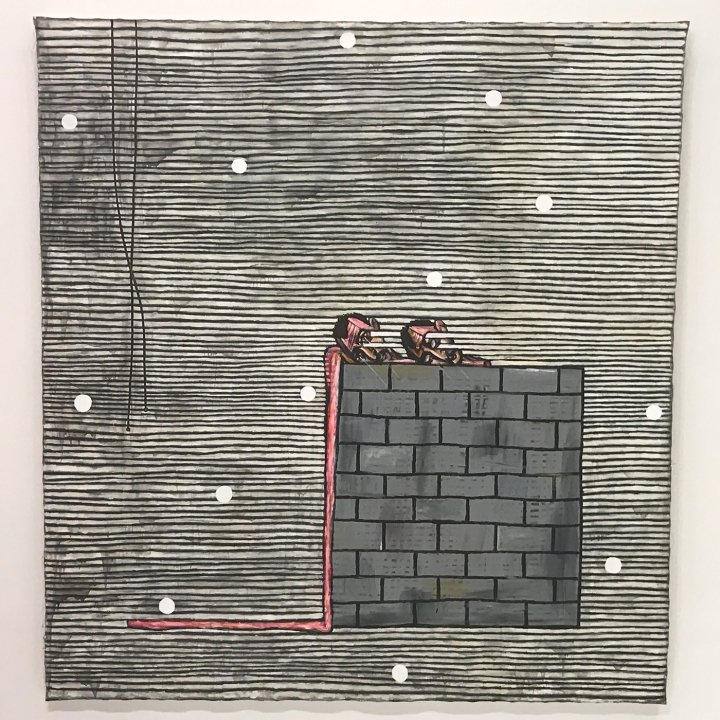
Luis Cruz Azaceta, “Wall 4” (1999), acrylic on canvas, 120 x 112 in

The American Museum of the Cuban Diaspora
Luis Cruz Azaceta: Dictators, Terrorism, War, and Exiles continues at the American Museum of the Cuban Diaspora (1200 Coral Way, Miami, Florida) through March 26, 2017.
